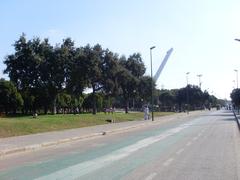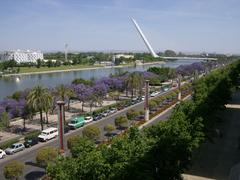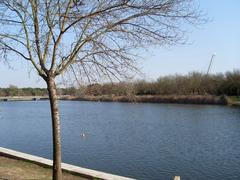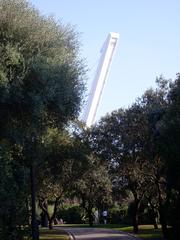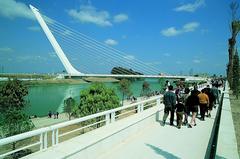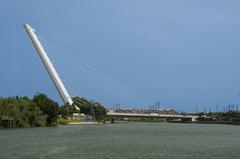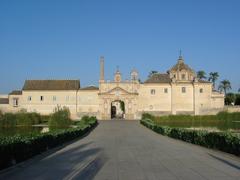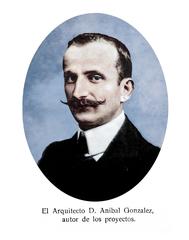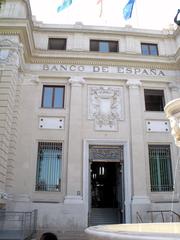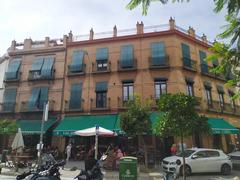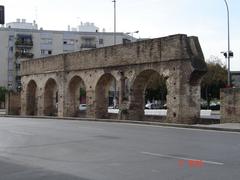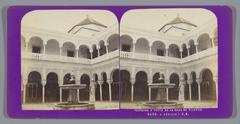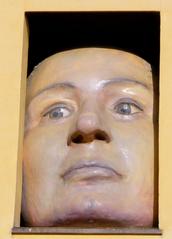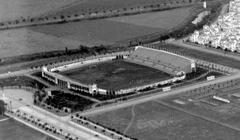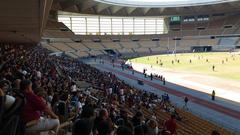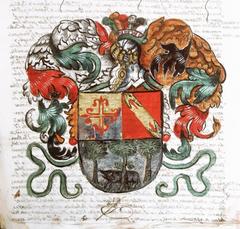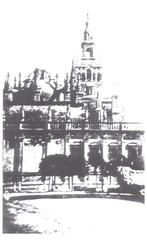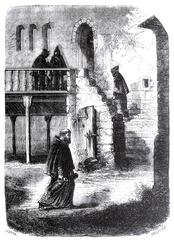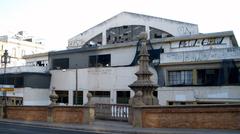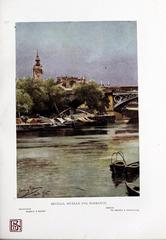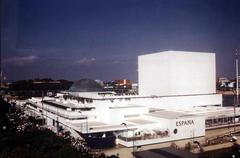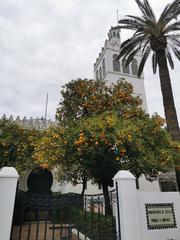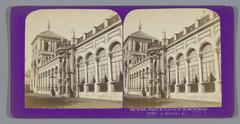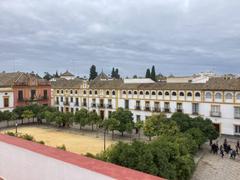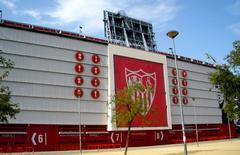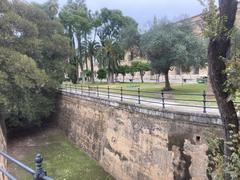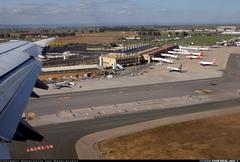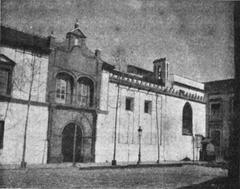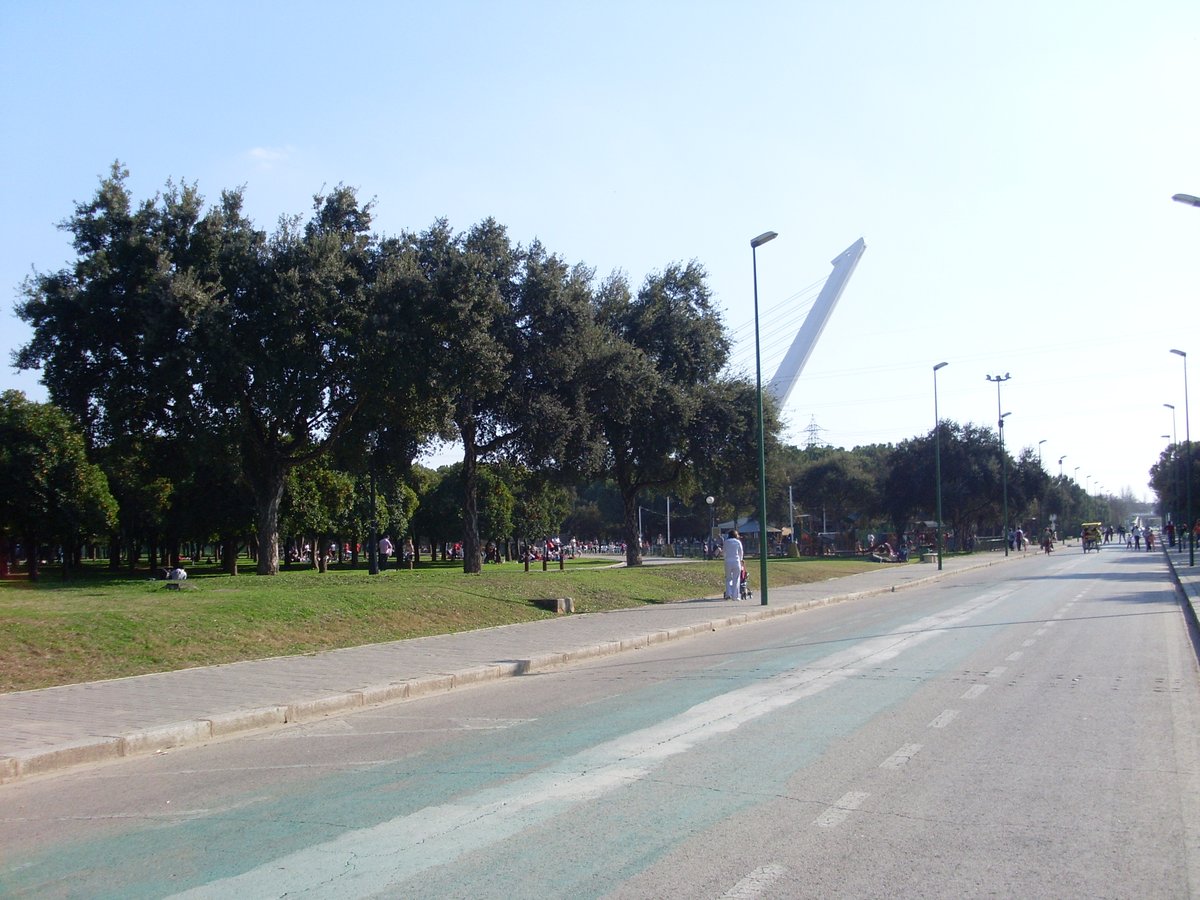
Puente del Alamillo Visiting Hours, Tickets, and Seville Historical Sites Guide
Date: 14/06/2025
Introduction: The Significance of Puente del Alamillo in Seville
Located in the heart of Seville, Spain, the Puente del Alamillo stands as a striking example of architectural ingenuity and urban revitalization. Designed by Santiago Calatrava for the 1992 Universal Exposition (Expo ’92), the bridge is more than a functional river crossing—it is a powerful symbol of Seville’s transition from historical grandeur to contemporary vibrancy. Its daring design and engineering innovation have made it an enduring icon, embodying the city’s spirit of renewal and openness to the world (World History Journal).
Seville’s Urban Transformation and the Birth of Puente del Alamillo
Expo ’92: Catalyst for Change
The latter 20th century ushered in a remarkable period for Seville, culminating in the city’s selection as host for Expo ’92—an event commemorating the 500th anniversary of Columbus’s first voyage. This milestone prompted significant urban development, including the transformation of Isla de la Cartuja from industrial farmland into a thriving cultural and recreational hub. Central to this transformation was the need for modern infrastructure to connect the historic city with the new exposition grounds (A View On Cities). The Puente del Alamillo emerged as a visionary response, symbolizing Seville’s leap into the future.
Strategic Urban Connectivity
The bridge’s location, just north of Seville’s historic center, was carefully chosen to maximize accessibility and visibility. By linking the city center with Isla de la Cartuja, the Puente del Alamillo played a pivotal role in integrating new and old urban spaces, facilitating the flow of people between cultural, historical, and recreational sites (Archiseek).
Architectural and Engineering Highlights
Calatrava’s Vision: Innovation and Artistry
Santiago Calatrava’s design for Puente del Alamillo was groundbreaking. The bridge’s defining feature—a single, backward-inclined pylon standing 142 meters tall—supports a 200-meter deck using only its own mass, dispensing with the need for back stays or anchorage. This cantilever spar cable-stayed system was unprecedented at the time and quickly became an international reference point for modern bridge design (Wikipedia, e-architect).
The bridge’s stark white, asymmetrical form stands in striking contrast to Seville’s historic skyline and is visible from landmarks such as La Giralda. Its sculptural silhouette and innovative engineering have inspired similar projects worldwide.
Structural Details
- Length: 250 meters total, 200 meters main span
- Pylon: 142 meters tall, angled at 68°
- Materials: High-strength steel and reinforced concrete
- Support: Thirteen pairs of steel cables and 54 steel piles beneath the pylon (Wikipedia, EUmies Awards)
Socio-Cultural Impact and Legacy
The Puente del Alamillo is more than an architectural statement; it is a living symbol of Seville’s dynamic identity. It embodies the city’s ability to bridge its storied past with a vision for the future, serving as a daily conduit for locals and a source of inspiration for visitors. The bridge’s integration into the city’s urban fabric has helped spur further revitalization and fostered a sense of pride among residents (World History Journal).
Visitor Information: Hours, Tickets, and Accessibility
Visiting Hours
- Open to the public 24/7: There are no restrictions on when you can visit the bridge. Both daytime and nighttime visits offer unique perspectives.
Tickets and Entry
- No tickets required: The bridge is freely accessible to all—pedestrians, cyclists, and vehicles.
Accessibility
- Inclusive design: Smooth ramps, wide walkways, and tactile paving ensure the bridge is accessible to people with disabilities, strollers, and bicycles (EUmies Awards).
- Safety features: Sturdy railings, non-slip surfaces, and comprehensive lighting enhance safety at all hours.
Getting There
- By public transport: Multiple bus lines and the Cartuja tram stop serve the bridge area.
- By bike or foot: Well-marked riverside routes and public bike-sharing stations offer convenient access.
- By car or taxi: Parking is available near bridge entrances.
Visitor Experience and Practical Tips
Panoramic Views and Photography
The bridge offers stunning views of Seville’s historic center, the Guadalquivir River, and Isla de la Cartuja. Sunrise and sunset provide the best natural light for photography, while evening illumination transforms the bridge into a luminous landmark (HollyMelody).
Walking and Cycling
Dedicated pedestrian and cycle lanes make for a safe and enjoyable crossing, whether you’re sightseeing, commuting, or exercising. The bridge connects seamlessly with Seville’s extensive bike path network and green spaces.
Best Times to Visit
- Early morning: Enjoy peaceful views and cooler temperatures.
- Evening: Experience dramatic lighting and a lively atmosphere.
What to Bring
- Comfortable shoes, water, sun protection, and a camera.
Nearby Attractions
- Parque del Alamillo: Expansive urban park with gardens, playgrounds, and picnic areas.
- Isla Mágica Theme Park: Family-friendly amusement park on Isla de la Cartuja.
- Estadio Olímpico de Sevilla: Olympic Stadium hosting events and concerts.
- Seville’s Historic Center: Landmarks like the Real Alcázar, Giralda Tower, and Plaza de España are within easy reach.
Sustainable Mobility and Green Integration
Puente del Alamillo supports Seville’s emphasis on sustainable urban transport by prioritizing walking and cycling. Its connection to Parque de la Cartuja encourages recreation and eco-friendly travel, helping reduce traffic congestion and carbon emissions (EUmies Awards).
Cultural and Social Life
More than a crossing, the bridge is a vibrant public space. It frequently hosts cultural events, group walks, and photography tours, and serves as a gathering point during festivals. Its presence has helped transform the surrounding area into a lively urban corridor (HollyMelody).
Frequently Asked Questions (FAQ)
Q: What are the Puente del Alamillo visiting hours?
A: The bridge is open 24 hours a day, every day.
Q: Is there an entrance fee or ticket required?
A: No, the bridge is freely accessible to all visitors.
Q: Is the bridge accessible for people with disabilities?
A: Yes, accessible paths and ramps are available.
Q: How can I get there by public transport?
A: Several bus lines and the Cartuja tram stop are nearby.
Q: Are there guided tours?
A: While there are no tours solely for the bridge, it is included in many city walking and cycling tours.
Visual Suggestions
- Photos of Puente del Alamillo at sunrise and sunset.
- Images of pedestrian and cyclist lanes in use.
- Nighttime shots with the bridge illuminated.
- Maps illustrating the bridge’s position relative to nearby attractions.
Internal Links
Conclusion
Puente del Alamillo stands as a testament to Seville’s successful blend of tradition and innovation. Its pioneering design, accessibility, and integration with the city’s cultural and recreational life make it a compelling destination for all visitors. Whether you seek architectural inspiration, panoramic views, or a gateway to Seville’s attractions, the bridge offers an experience that captures the essence of the city’s modern renaissance.
For personalized itineraries and up-to-date information on Seville’s cultural sites, download the Audiala app and follow our social channels for the latest events and tips.
